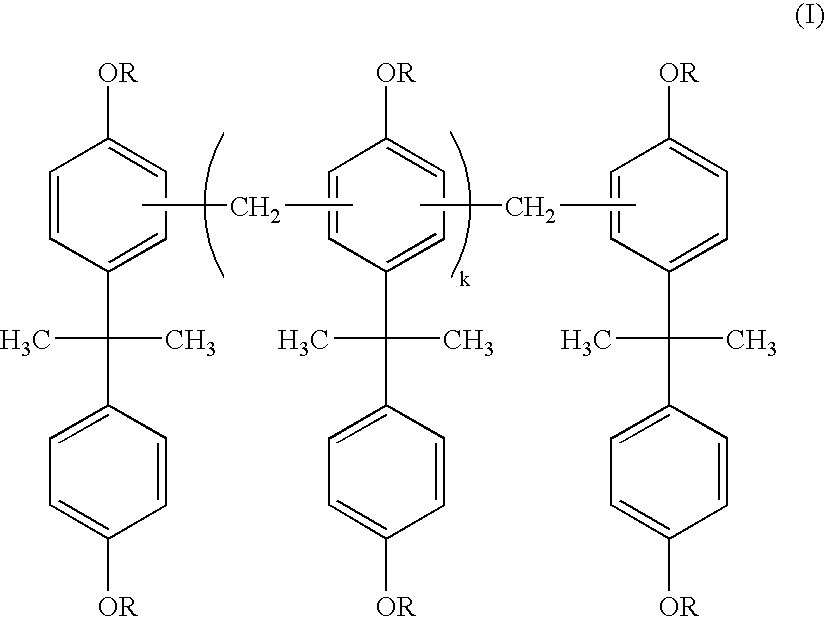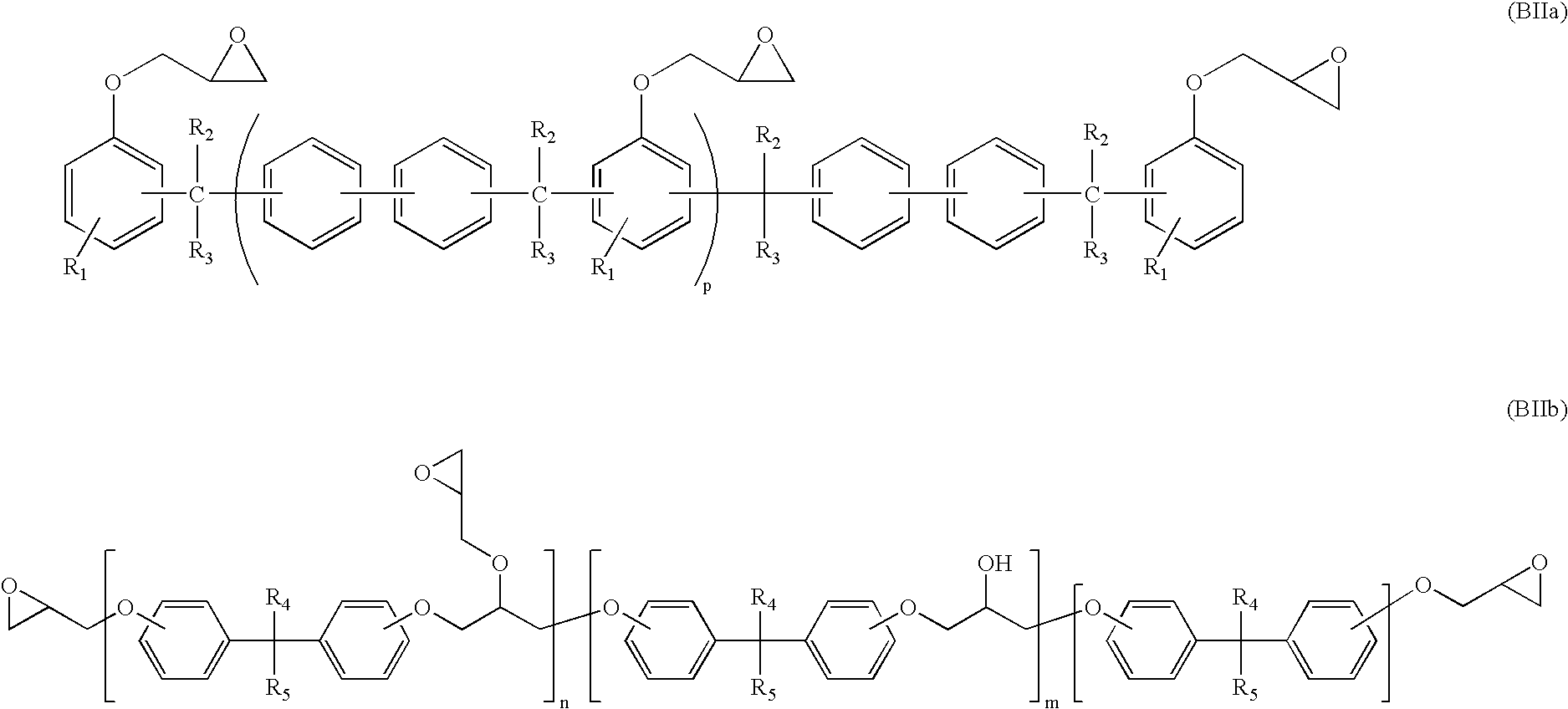Permanent resist composition, cured product thereof, and use thereof
a technology of permanent resist and epoxy resin, which is applied in the field of photoimageable epoxy resin compositions and the permanent cure products thereof, can solve the problems of reducing radiation intensity, thickness limitation, and conventional positive resists based on diazonaphthoquinone-novolac chemistry, and achieves the effect of improving film adhesion and increasing film density
- Summary
- Abstract
- Description
- Claims
- Application Information
AI Technical Summary
Benefits of technology
Problems solved by technology
Method used
Image
Examples
examples and experiments
General Experimental Procedures for Testing Photoresist Samples
Method for Formulating Photoresist Composition Examples 1 through 19, 30 and 31 and
example 32
Preparation and Processing of Dry Film Photoresist Composition
[0103] The composition of Example 19 (Table 2) containing approximately 55% solids was prepared as a dry film photoresist of approximately 15 μm thickness by coating the composition on Kapton film using the draw down method with a #20 Meyer rod mounted on an ACCU-LAB™ Auto-Draw III draw down coating machine (Industry Tech, Oldsmar, Fla.). The coated Kapton was dried in a mechanical convection oven at 100° C. for 15 minutes. The resulting dry film was then laminated onto a silicon wafer using a Dupont Riston® laminating machine operated at a roll temperature of 85° C., a roll pressure of 55 psi, and a roll speed of 0.3 meters per minute. After cooling for 2 minutes the Kapton film was peeled from the laminate leaving the photoresist composition on the silicon wafer. Next, the wafer was image-wise exposed at 100-800 mJ / cm2 using a multistep transmission test mask designed by MicroChem Corp. on the AB-M, Inc. light source w...
example 33
Use of Organoaluminum Ion Gettering Agent (K)
[0127] A permanent photoresist composition was obtained by mixing 1 part by weight of aluminum triacetylacetonate (ALCMP) with 100 parts by weight of the photoresist composition in Example 21. A direct current of 100 V was applied to the permanent photoresist cured film obtained from this permanent photoresist composition under conditions of 90° C. and 90% RH. Insulation resistance after 500 hours was determined to be 1011 Ω or higher.
PUM
| Property | Measurement | Unit |
|---|---|---|
| weight percent | aaaaa | aaaaa |
| image aspect ratio | aaaaa | aaaaa |
| thickness | aaaaa | aaaaa |
Abstract
Description
Claims
Application Information
 Login to View More
Login to View More - R&D
- Intellectual Property
- Life Sciences
- Materials
- Tech Scout
- Unparalleled Data Quality
- Higher Quality Content
- 60% Fewer Hallucinations
Browse by: Latest US Patents, China's latest patents, Technical Efficacy Thesaurus, Application Domain, Technology Topic, Popular Technical Reports.
© 2025 PatSnap. All rights reserved.Legal|Privacy policy|Modern Slavery Act Transparency Statement|Sitemap|About US| Contact US: help@patsnap.com



